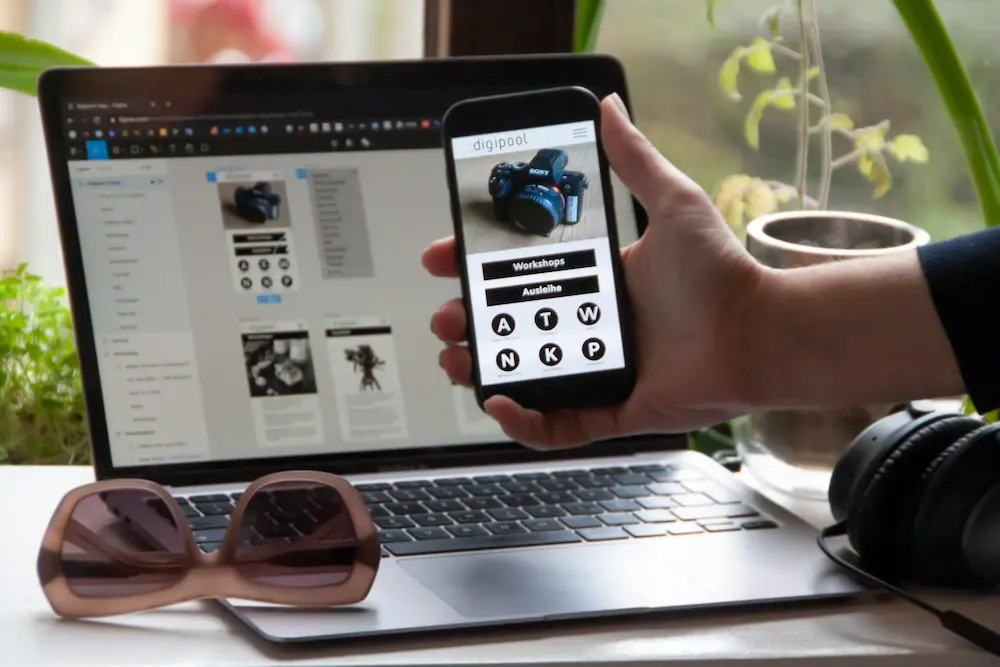Web design is a constantly evolving practice, not only to ensure that designs stay up to date vis a vis the latest trends but also to keep up with the ever-evolving best practices in website design. Historically, the limited choices of platforms that aid in the actual site build have made this practice more challenging. In the past, designers had to make the choice of developing genuinely unique, custom-made websites that look and operate brilliantly but were challenging for the average person to operate or opting for CMSs like WordPress that are easy for the end user to maintain but are severely restricted in what they can actually archive. It is for these reasons that Webflow has managed to explode onto the scene and absolutely eat the lunch of almost all other web development platforms on the market. This posit explains why Webflow has become the preferred choice for web designers, from its user-friendly interface to the limitless number of customizations it can generate.
You Can Use Traditional Design Tools And Convert The Designs Into A Website
Many professional designers prefer avoiding jumping straight into a web editor when generating their designs and opt to use tools created explicitly with design in mind. Fortunately, while Webflow provides an advanced visual editor, the platform also recognizes many designers still prefer crafting layouts in their tool of choice before building the live site. Webflow makes it seamless to bring designs created elsewhere directly into the platform. Designers can leverage industry-standard tools like Sketch, Photoshop, and Figma to craft pixel-perfect mockups, which they can then present to their clients before making the jump from Figma to Webflow or whatever tool they use to final design. The platform supports importing layered design files with nested components, images, and styling intact. Builders have complete control to rapidly reconstruct entire mockups from other applications using Webflow’s intuitive editor. It is this attention to detail and an understanding of how a designer likes to work that has made it the platform of choice for many in the industry.
Intuitive Design Tools For Customization
Even though a designer may create a mockup using third-party tools, once imported, they will still need to make adjustments to get it working as they want or update it based on client feedback. The visual interface allows builders to leverage drag-and-drop components like sections, buttons, and menus without code (more on that later, though). Advanced styling panels provide pixel-level control over all the things that any hot-blooded designer salivates over, including typography, color, spacing, and more, all with live previews to understand how their choices translate into the real world. They can also build their own custom components, using the full capabilities of CSS and HTML to make small changes that make the difference between amateur and professional designers. However, perhaps most valuable is how Webflow empowers iteration. Its non-destructive workflows and instant previews let designers safely experiment. They can refine designs through countless drafts before a line of code is written.

No Coding Knowledge Is Needed To Generate Picture-Perfect Websites
Prior to delving into this point in greater depth, it must be stated that while code is not required to produce designs, any designer worth their salt should still have a fundamental understanding of HTML and CSS. Moreover, as already mentioned, Webflow actually provides these options if you need them. Nevertheless, while coding prowess expands creative possibilities, Webflow stands out by giving even non-technical builders the power to craft polished, production-ready sites through its visual editor alone. The platform handles all the backend work, from responsive design to security and even deployments. Pre-built components for common site elements further simplify template creation. Webflow’s library includes universal blocks for navigation menus, buttons, forms, and more that automatically generate optimized code. Essentially, by eliminating the need to touch a line of code, Webflow gives designers a pro solution to bring their creative concepts to life, no matter how complex they may be.
Integrate Seamlessly With Third-Party Tools
When dealing with higher-end clients who spend serious money on their websites, integrating the kind of tools they need to operate effectively can quickly become a nightmare, particularly for those with less technical experience. Designers have to wrestle with an array of APIs and all sorts of tricky code if they are to integrate the various things their clients have requested. The power of Webflow lies in its open architecture designed for frictionless expansion well beyond the editor. The platform maintains a sprawling marketplace of pre-built integrations with hundreds of popular SaaS tools. Designers can connect services for marketing, analytics, payments, and more with just a few clicks, thanks to Webflow’s robust API. Most importantly, Webflow sites remain fully functional and independent regardless of third parties. Integrations only enhance and not limit what the platform offers out of the box.

Comprehensive Customer Support And Documentation Is Available
While a robust feature set and intuitive interface help designers succeed, no platform is complete without reliable assistance when issues arise. On this front, Webflow delivers comprehensive customer support and learning resources. The company provides 24/7 support through multiple channels, including email, live chat, and their active user forum. An extensive searchable knowledge base covers a vast array of topics to help troubleshoot all kinds of technical, design, and integration questions independently. For more in-depth guidance, Webflow University offers a sprawling library of video tutorials and detailed documentation.
It’s Easy For The End User To Maintain
While design quality is crucial for making a solid first impression, websites must also be low-maintenance to remain effective over the long run. On this front, Webflow excels by empowering clients to manage ongoing updates themselves. Advanced permissions allow sharing access selectively. Designers can grant clients control over specific site sections or future-proof projects by delegating tasks. Webflow also simplifies launching updated content through instant live previews. By future-proofing sites against code skills, businesses avoid costly maintenance contracts or redesigns down the road. Designers know their clients’ websites remain professionally managed even without developer assistance.
While there are plenty of other reasons why Webflow has firmly accepted its place as a designer’s best friend, these few give you a good indication as to why. From its ease of use to the tight integration with third-party tools and software, Webflow has utterly revolutionized web design.

